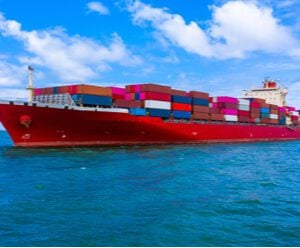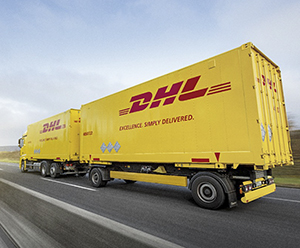
Limited ocean freight capacity led a Vietnam seafood exporter into the skies

Vietnam's seafood export business is facing its greatest challenge yet as ocean freight capacity remains maxed out while demand is at an all-time high. This has, unfortunately, led to some businesses shipping at a loss to fulfill their orders around the world.
But Seaspimex, Vietnam’s largest state-owned fishery corporation, may have found an answer: shipping by air using cheaper packaging, some careful calculations, and photos taken with a smartphone. The DHL team which helped Seaspimex on the project believes more economically viable approaches are key to solve the supply chain problems many exporters are facing.
For the past two decades, Seaspimex has been relying on ocean freight to import fresh fish and crustaceans to Philadelphia.
Recent disruptions and shortages in ocean freight, however, have affected deliveries to the U.S.. This, unfortunately, had an adverse effect on their partner, an American full-service distributor which produces canned seafood.
While arranging to deliver an urgent shipment of chilled crabs, Seaspimex found themselves having to pay record-high ocean freight rates. Worse still, it would have taken at least three weeks to a month to secure their full container load (FCL) reefer to the U.S.
“Ocean freight rates have soared for all trade routes and space shortage is worsening month after month, making it increasingly difficult for many seafood businesses who rely on seaway to export their seafood,” said Laurence Cheung, Managing Director, Vietnam, Cambodia & Laos, DHL Global Forwarding, on the ocean freight situation.
As an average of 95 percent of Vietnam’s seafood is traditionally exported via seaway, the ocean freight price hikes have forced seafood exporters to accept losses to keep relationships with traditional partners.
If continued, the pandemic-driven disruptions in the ocean supply chain could threaten the booming seafood industry in Vietnam, which leapfrogged Thailand to become the world’s third-largest seafood exporter in 2019.
“Difficult problems require creative solutions. We knew we had to look into viable alternatives to help customers in the same situation as Seaspimex,” said Cheung. “The shrinking cost differential between air and ocean freight helped make the case of sending the shipment via air instead.”
Diverting chilled crabs from the ocean to the air
The transition of freight modes came with a host of challenges. Time was one of Seaspimex’s main issues as they had to deliver their urgent shipment — 200 cartons of chilled crabs — to the U.S. within a week.
To circumvent the delays in delivery time within reasonable costs, Seaspimex worked closely with the DHL Global Forwarding Vietnam team to divert their ocean cargo to air freight.
The delivery required close collaboration between both the origin team in Vietnam and the destination team in the U.S. to navigate the transition. At short notice, the team had to find an airline with the facilities to fulfill the temperature requirements at a reasonable rate, and also arrange a weekday flight that suited the customer’s preferred estimated time of arrival.
“Shipping 200 cartons of perishables via air freight is quite significant. We had to go through a lot of planning as this was the first time we were working with Seaspimex and also their first time shipping seafood via air.”
Another key challenge with Seaspimex’s shipment was maintaining the temperature of the cargo between zero to three degrees celsius from their factory in Vietnam to their destination in the U.S.
“For perishables, we would typically recommend using active packaging, such as envirotainers, which actively adjusts the temperature inside the container to keep the specified temperature range,” explained Cheung. “That does, however, come at a higher cost.”
To keep shipping fees affordable, the DHL team proposed a more cost-efficient alternative in passive packaging, using styrofoam boxes packed with dry ice. The thermo-package and cooling materials can maintain the temperature inside the cartons for 96 hours, and temperature data loggers can provide full visibility of the temperature conditions of the crabs throughout the entire transport process.
However, perishables managed by airlines are typically housed at two to eight degrees Celsius, slightly above the ideal range for the chilled crabs.
To keep the crabs chilled, the team had to navigate a fine balance, as crabs are notoriously known for being delicate perishables. “We had to calculate the exact quantity of dry ice to use for each box, monitored using the temperature loggers, to consider the rate at which the dry ice would melt,” added Cheung.
“With too much ice, the crabs could be frozen, whereas too little dry ice could melt quickly, both of which would affect the quality of the crab during the trip,” explained Cheung.
Furthermore, airport regulations prevented DHL staff from entering the temperature control facility in the cargo terminal. To monitor the repackaging of the shipment, the team had to provide clear instructions to the terminal staff, who sent them photos, as they unloaded the crabs in a chiller and repackaged them in Styrofoam boxes filled with fresh replacements of dry ice before the shipment embarked on its long flight to the U.S.
Throughout the 38-hour journey, the team monitored the shipment milestones, providing Seaspimex with continuous updates until the shipment touched ground at John Frank Kennedy Airport, where the DHL Global Forwarding U.S. air freight team then handed the cargo over to the Seaspimex team awaiting the shipment at the airport.
The smooth transition from ocean to air freight gave Seaspimex the confidence to consider air freight as a viable shipping option for future shipments.
Innovating new ways for affordable chilled packaging
Cheung believes that a more permanent solution to overcome freight disruptions is to develop innovative solutions for reefer containers that would make shipping perishables more affordable.
“In the age of Covid-19, the growing need for volume flexibility and increasing time and cost pressures will necessitate new container formats and processes that will take time to innovate and be adopted,” said Cheung.
As businesses struggle with soaring freight rates and long transit times, they are looking for more cost-effective and efficient ways to export their cargo.
Logistics providers, meanwhile, are stepping up to find solutions through the pandemic-driven obstacles.
“It is therefore essential that we are agile and flexible when working to find logistics solutions for our customers. We hope to continue helping businesses find more economically viable end-to-end solutions to their supply chain problems, and in doing so, build partnerships that last beyond the pandemic,” said Cheung.
ALSO WORTH READING














 English
English